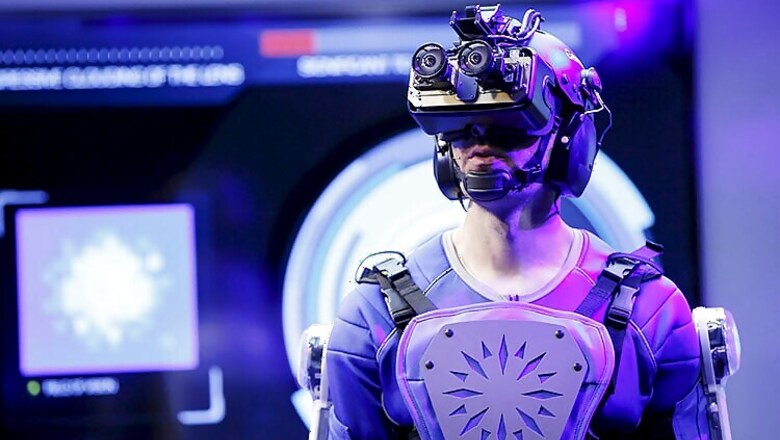
views
With the push of a button, a perfectly healthy 34-year-old museum-goer named Ugo Dumont was transformed into a confused 85-year-old man with cataracts, glaucoma and a ringing in his ears known as tinnitus.
Dumont had volunteered at Liberty Science Centre on Tuesday to don a computer-controlled exoskeleton that can be remotely manipulated to debilitate joints, vision and hearing and shared with the crowd what ageing feels like decades before his time.
Headphones muffled his hearing while goggles left him with only peripheral vision due to macular degeneration while the suit's joints were adjusted to simulate the stiffness of rheumatoid arthritis. The 18 kg suit also gave Dumont a taste of the weight gain people typically experience as they age.
"Wow," Dumont gasped as he struggled to walk on a treadmill facing a video titled "Walk on the Beach." His heart raced from 81 beats per minute to 100 as the staff cranked up the ailments, pushing buttons and levers on a control board linked to the computer backpack that he wore.
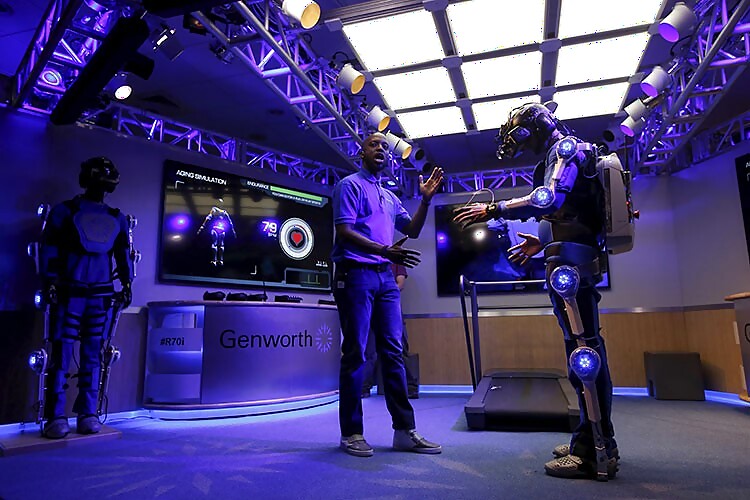
"I don't know how you can focus on the water. You just want to be in bed!" said Dumont, a photo agent who lives in the nearby New York City borough of Brooklyn.
The Genworth Ageing Experience is a travelling show created by Genworth Financial, an insurance company, in partnership with Applied Minds, a design and engineering company, that allows museum visitors to feel first-hand the effects of ageing.
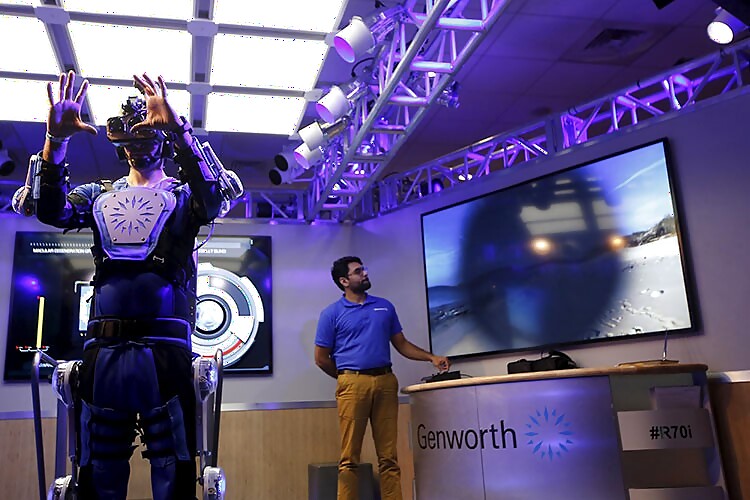
Genworth "brand ambassador" Candace Hammer, who narrated one demonstration of the aging suit, said the show's aim is to build empathy and awareness of the challenges elderly people face in everyday situations. That includes everything from joints so stiff you cannot get the breakfast cereal off the shelf to trying to talk to someone in a noisy restaurant when a neurological condition known as aphasia sends words bouncing around in your head.
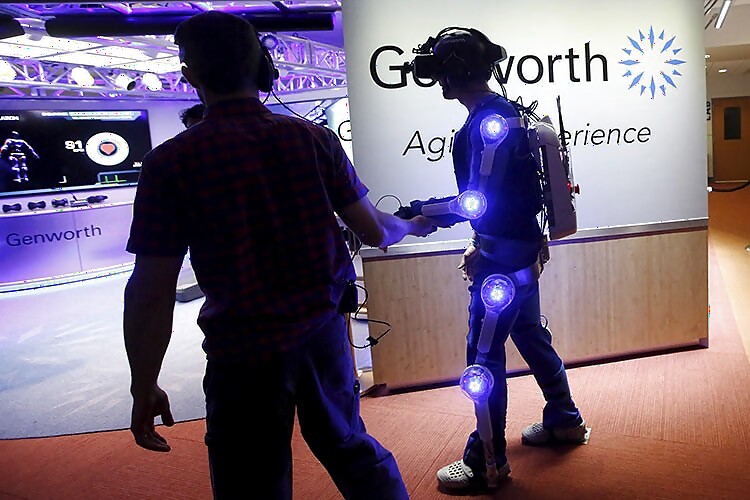
Attention, baby boomers
Ultimately that understanding may spark families to start conversations with 75 million baby boomers in the United States approaching retirement, nearly one-quarter of the population, about long-term care and how to pay for it, said a statement from Genworth, which sells long-term care insurance.
"In our culture, we revere youth and beauty, so this is opening up the channels to have the 'let's talk' conversation," Hammer said. "It's not shameful that you should need care."
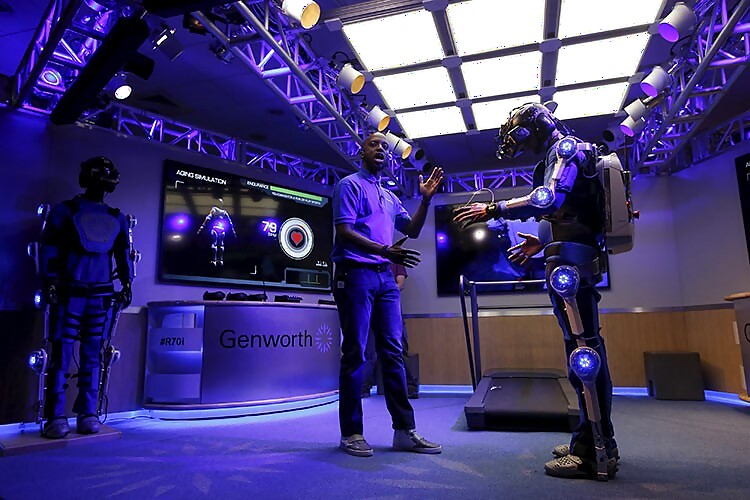
There are limits to how deeply the suit immerses the wearer in the ageing experience since it cannot simulate the pain of rheumatoid arthritis, the difficulty of urinating or not urinating, the trauma of Alzheimer's disease and dementia and so many other of the other miseries that can be hallmarks of ageing.
Still, even feeling just part of ageing's toll on the body had a dramatic effect not just on the volunteers who wore the suit but on audience members as well.
Robert Richards, 74, a retired publishing executive from Madison, New Jersey, said he now understood why his older golfing partners moved slowly.
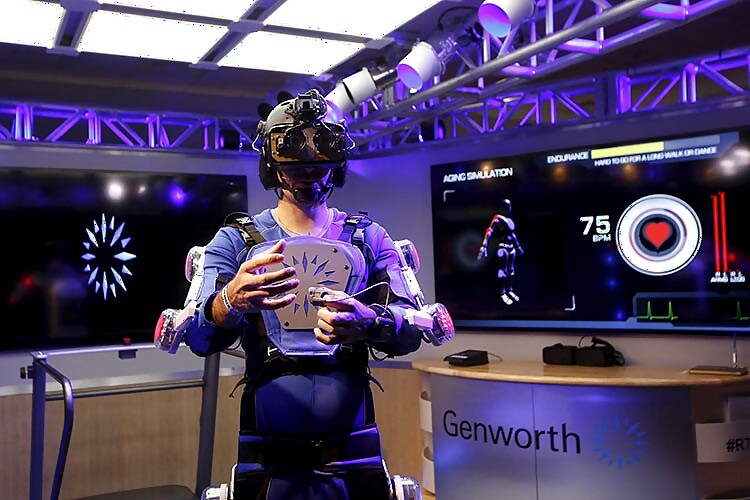
"I'll be more patient when I'm waiting for them to swing. Sometimes you think, 'Can't you just get up there and do it?!'" said Richards, who has had one hip replaced, suffers partial hearing loss and wears contact lenses.
With him was his granddaughter, 8-year-old Maggie Richards of Mahwah, New Jersey, who said the "really cool" exhibit would change her behaviour, too.
"You think old people are weirdos but then you understand that they don't see you and they can't hear you," she said. "I'm going to give them more time to understand what to do. I'll say, 'Can you please move?' Instead of, 'Get out of the way!'"



















Comments
0 comment